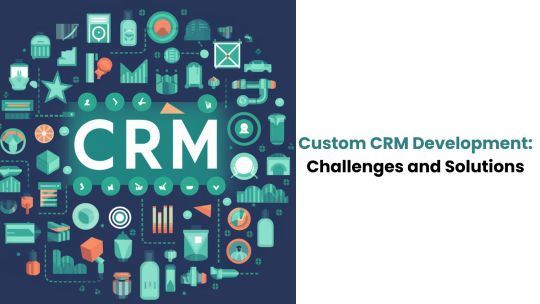#CustomCRMDevelopmentCompany
Explore tagged Tumblr posts
Text
The Hiring Maze: How One Logistics Firm Escaped the Cycle of Bad Hires

Meet Sameer. Like many entrepreneurs steering a fast-growing logistics firm, Sameer faced a constant battle: scaling his team effectively. He initially thought hiring was straightforward – post a job, sift through resumes, conduct interviews, and onboard the best candidate. However, the reality of his recruitment process was far from this ideal scenario.
Each new hire felt like a gamble. Candidates who shone during interviews often underperformed once they joined. Critical skill gaps emerged, work ethic didn't align with company culture, and crucial deadlines were missed. This wasn't an occasional hiccup; it was a recurring nightmare that hampered growth and drained resources.

Sameer's HR team, despite their best efforts, was caught in a reactive loop. They spent countless hours manually screening hundreds of resumes, often leading to interviews with fundamentally mismatched candidates. The onboarding experience lacked structure, failing to set new employees up for success. Communication with applicants was inconsistent, with rejected candidates often left in the dark – a practice that inevitably tarnished the company's employer brand.
Does this sound like your company's hiring struggle?
Sameer wasn't lacking ambition or talented people. The core issue was the absence of a robust hiring system. He was trapped in a cycle of inefficiency:
Endless manual resume screening.
Wasted hours interviewing unsuitable candidates.
Haphazard onboarding without clear evaluation metrics.
No systematic post-hire tracking to measure actual performance.
Losing promising talent due to slow communication and follow-up.
This chaotic approach wasn't just frustrating; it was actively hindering his business's potential.
Finding the Solution: Implementing a Strategic Recruitment & HR ERP

Recognizing the need for a fundamental change, Sameer explored solutions and discovered the Recruitment & HR ERP offered by KSoft Technologies. This wasn't just another piece of software; it was the foundation for the strategic hiring system his company desperately needed.
The transformation was immediate and profound:
Smart Candidate Filters: Advanced algorithms instantly highlighted the most promising candidates, drastically reducing manual screening time.
Automated Communication: Timely, respectful SMS and email updates kept all applicants informed, including automated rejection notifications, enhancing the candidate experience.
Centralized Hiring Dashboard: Managing applicant tests, interview schedules, and final evaluations became streamlined and transparent.
Performance Tracking: Integrated tools allowed for effective post-hire tracking, providing clear data on how new hires performed against expectations over time.
Actionable Insights: Real-time analytics empowered Sameer and his team to make faster, data-driven hiring decisions.
Hiring shifted from a stressful, unpredictable chore to a strategic advantage. The guesswork was eliminated, replaced by a clear, efficient process.
The Result: Confident Growth and a Stronger Culture
With the right recruitment system in place, Sameer consistently brought the right people into the right roles at the right time. His logistics firm didn't just expand its headcount; it cultivated a stronger company culture, boosted overall capability, and grew with newfound confidence.

Ready to break free from your own hiring illusions and build a predictable, efficient recruitment engine? Discover how a tailored Recruitment & HR ERP can transform your hiring process from a source of frustration into a strategic driver of growth.
[Click Here to Learn More About Building Your Smart Recruitment System with KSoft Technologies
#RecruitmentSystem#HRTechUSA#CustomSoftwareDevelopment#WebDevelopmentAI#SoftwareDevelopmentCompanyUSA#MobileAppDevelopersUSA#BestSoftwareDevelopersUSA#AppDevelopersNearMeUSA#ResponsiveWebDesign#CustomCRMDevelopmentCompany
0 notes
Text
Custom CRM Development: Challenges and Solutions
In the realm of business operations, custom CRM development presents both challenges and solutions. Understanding the unique obstacles faced in creating tailored CRM systems is crucial for successful implementation. In this blog post, we will explore the common hurdles encountered in custom CRM development and provide effective solutions to overcome them. Let's delve into the intricacies of crafting a personalized CRM solution that aligns with your business needs.

Understanding Custom CRM Development
Before diving into the challenges and solutions, it's crucial to grasp the concept of custom CRM development. Unlike off-the-shelf CRM solutions that offer a one-size-fits-all approach, custom CRM development involves creating a bespoke system tailored to the specific requirements of a business. This customization enables organizations to align the CRM platform with their processes, workflows, and objectives, thereby maximizing efficiency and effectiveness.
Challenges in Custom CRM Development
1) Scope Creep:
One of the primary challenges in custom CRM development is managing scope creep. As stakeholders provide feedback and request additional features, the project scope can expand beyond the initial plan, leading to delays and budget overruns.
2) Integration Complexity:
Integrating custom CRM with existing systems, such as ERP software, marketing automation tools, or e-commerce platforms, can be complex and time-consuming. Ensuring seamless data flow and interoperability requires meticulous planning and execution.
3) User Adoption:
Introducing a new CRM system often faces resistance from employees who are accustomed to existing processes. Overcoming user resistance and ensuring widespread adoption of the custom CRM is essential for realizing its full potential.
4) Data Migration:
Migrating data from legacy systems or disparate sources into a custom CRM without compromising data integrity and accuracy is a daunting task. Data mapping, cleansing, and migration strategies must be carefully devised and executed.
5) Scalability:
Custom CRMs must be designed with scalability in mind to accommodate future growth and evolving business needs. Failing to anticipate scalability requirements may result in costly rework or system limitations down the line.
6) Security Concerns:
Safeguarding sensitive customer data is paramount in custom CRM development. Implementing robust security measures to prevent unauthorized access, data breaches, and cyber threats is non-negotiable.
Solutions to Overcome Challenges
1. Define Clear Requirements:
To mitigate scope creep, it's essential to define clear and concise requirements at the outset of the project. Conduct thorough stakeholder interviews and prioritize features based on business objectives.
2. Modular Development Approach:
Adopt a modular development approach that breaks down the CRM project into smaller, manageable components. This allows for incremental development, frequent testing, and easier integration of new features.
3. User-Centric Design:
Involve end-users in the CRM development process from the early stages to ensure that the system is intuitive, user-friendly, and aligns with their workflow. Conduct training sessions and provide ongoing support to facilitate user adoption.
4. Data Migration Strategy:
Develop a comprehensive data migration strategy that includes data profiling, cleansing, validation, and testing. Collaborate with data experts to ensure a smooth transition and minimize disruption to business operations.
5. Scalable Architecture:
Architect a custom CRM with scalability in mind, leveraging scalable cloud infrastructure and flexible design patterns. Implement modular components and scalable databases to accommodate future growth without compromising performance.
6. Security by Design:
Integrate security measures into every aspect of the CRM development lifecycle, including access controls, encryption, vulnerability assessments, and regular security audits. Stay updated on emerging threats and compliance requirements to proactively address security concerns.
Also read: The Ultimate Guide to Choosing the Right CRM Development Company
Conclusion
Custom CRM development faces challenges like scope creep, integration complexity, and user adoption. Solutions include defining clear requirements, modular development, prioritizing user-centric design, robust data migration, scalable architecture, and prioritizing security measures.
#CRM#customerrelationshipmanagement#customCRMdevelopment#customCRMdevelopmentchallenges#customCRMdevelopmentsolutions#customCRMsolutions#customCRMdevelopmentcompany#CRMsolutions#IIHGlobal
0 notes